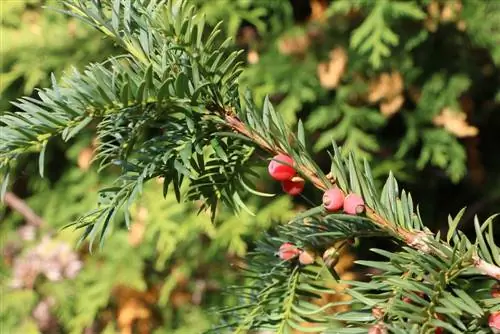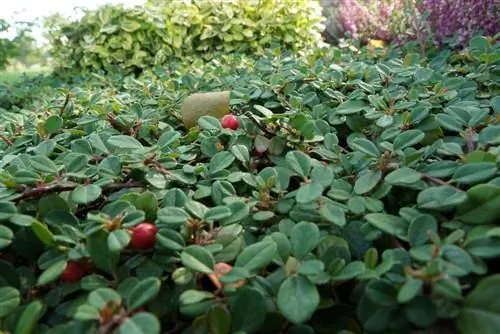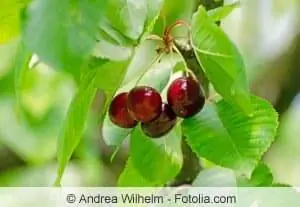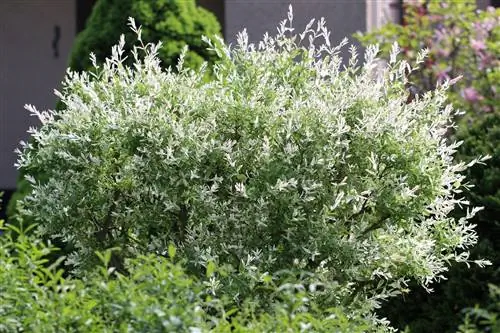- Author admin [email protected].
- Public 2023-12-17 03:39.
- Last modified 2025-06-01 06:48.
Shade providers, property boundaries and mini oasis - a garden without trees is unthinkable for most hobby gardeners. The choice of different varieties is enormous, so you first have to decide which variants are suitable for your individual green space. In addition to small trees for mini gardens, there are also massive varieties available, and those who are impatient will enjoy particularly fast-growing plants. With the right selection, every garden becomes the perfect retreat!
Small trees for the mini garden
Even if there is only a small amount of open space available for green space at home, many hobby gardeners are convinced that a real garden needs a tree. Given the small size of the garden, preference should be given to species that do not take up too much space and do not appear overloaded. Depending on individual ideas and the type of garden, various options are available.
Ball trees
- the classic among mini trees -
Various varieties of many tree species are available that only reach a small size; These are variants that form a spherical crown. If you want to start with a small garden and expand the green area over the years, you should start with ball trees, which initially grow in miniature format - but can later reach a crown diameter of up to 5m. These include:
- the ball maple
- the ball robinia
- the hawthorn
- the blood plum
- the apple thorn
- the ball linden tree
- the dwarf ball pine
If it is clear in advance that the garden cannot be expanded at a later date, you should choose varieties that always remain small and only take up a little space. These mainly include exotic and generally less common varieties, for example:
- the rock pear
- the ball steppe cherry
- the ball swamp oak
These trees have a maximum crown diameter of 3m.
Overhanging shapes
- for special needs -
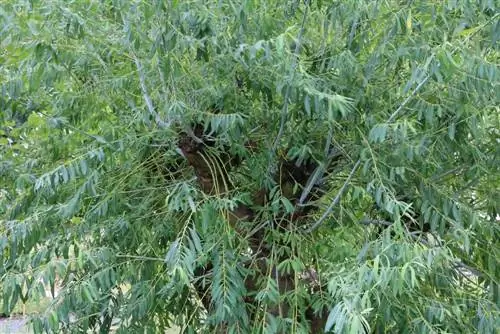
Most hobby gardeners also use their local green space to retreat and relax from time to time. A dreamy spot can also be quickly set up in a mini garden. Tree species that underline this special flair go well with this; Trees with overhanging growth have proven particularly useful in this context. For example, have a romantic effect:
- Kitten Willow
- Red Hanging Beech
- Hanging Elm
- Harlequin Willow
- Almond tree
When planting, however, care must be taken to ensure that both cattail willow and red hanging beech form hanging shoots that block the light from underplanting; For this reason, these species should primarily be grown as solitary trees on property boundaries. Harlequin willow and almond trees, however, can be planted anywhere in the garden. They form a long trunk and a shapely crown that allows other plants enough light.
Evergreen deciduous trees
Many hobby gardeners want to enjoy their garden and the plants in it even during the cold season. The following trees are ideal for this:
- Evergreen boxwood
- Real laurel
- Laurel Cherry
Tip:
The boxwood is easy to prune; An artfully executed cut, for example as a spherical crown, can beautify the entire garden.
Fruit trees in mini format
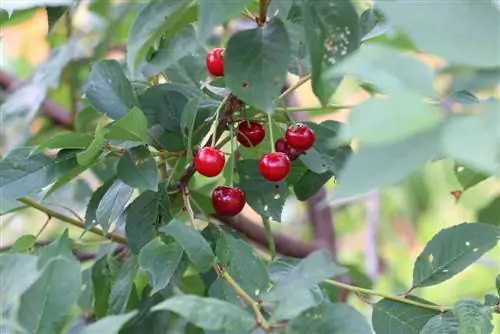
Most garden owners not only want to enjoy the trees, but also use them - for example by harvesting the fruits of the plants. Small fruit trees include:
- the apricot
- the crab apple
- the cherry plum
- the medlar
- the peach
- the plum
- the sour cherry
Tip:
In addition to fruit trees, there is also a type of nut that can be grown as a small tree; This is the municipality of Hasel.
Coniferous trees for the small garden
Small varieties are also available among conifers that will beautify even the smallest green area. These include:
- the mountain pine
- the dwarf larch
- the Korea fir
- the sugarloaf spruce
- the dwarf columnar juniper
If you choose the Sugarloaf spruce, you can also plant it in a pot and bring it into your house at Christmas time; This is a popular Christmas conifer. However, like the mountain pine and the Korean fir, the plant grows very slowly.
Big Trees
Anyone who has a spacious garden can be happy: In addition to numerous small trees, one or two large specimens can also be cultivated here.
Deciduous trees
One of the most popular deciduous trees in the local green space is the maple, which produces decorative leaves and provides valuable shade in summer. Several varieties are available:
- the sycamore maple (up to 30m)
- the ball maple (only certain varieties, reach a height of 25m)
- the Norway maple
- the slotted silver maple
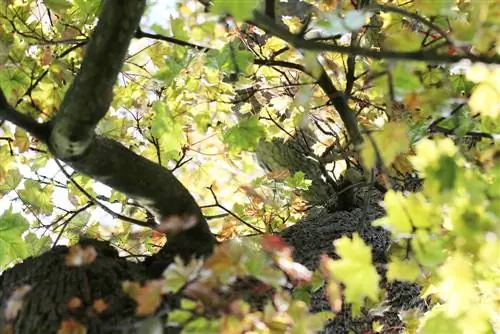
Various types of birch and beech trees reach a similar height, growing to an average height of 30 meters each. These include, for example, downy birch and sand birch as well as European beech. Children in particular are happy when the deciduous tree not only produces decorative leaves for crafts, but also fruits; The horse chestnut, for example, also produces dark brown capsule fruits that can be used in a variety of ways. The tree (common horse chestnut) reaches a height of up to 30m when fully grown. The fleshy horse chestnut - an ornamental plant - only grows to a height of around 20m.
Other tall trees also form plant parts that can be used in different areas. These include:
- the oak tree
- the linden tree
- the ginkgo tree
These trees reach a height of up to 40 meters and can be used in a variety of ways. For example, the fruits of the oak tree can be used excellently for crafting and decorating, while the flowers of the linden tree can be used to make a sweaty drink against fever. The healing effects of ginkgo leaves are diverse and primarily affect blood circulation, which can be improved by the ingredients in the leaves.
Conifers
While deciduous trees are used as valuable sources of shade, coniferous trees are often used to define areas within the local green space. If things have to happen quickly and the hobby gardener wants a tall coniferous tree planting within just a few years, he should use classic fish trees. While the extremely decorative blue spruce reaches a height of up to 40 meters, the Norway spruce even grows up to 60m high. Other varieties are:
- Red pine (40m)
- Black pine (45m)
- European larch (40m)
- Giant sequoia (50m)
- Primitive sequoia tree (35m)
- White fir (30 - 50m)
Tip:
If you're looking for something special, a sequoia tree in the garden is a real eye-catcher. The trunk in particular exudes a prehistoric flair that fascinates every viewer.
Nut trees
Last but not least, hobby gardeners can also rely on a variety of nut trees that reach a certain height. These include:
- the sweet chestnut, whose nut tastes great as a roasted dessert
- the black walnut that grows to 25m high
- the walnut, which can be eaten plain or used to prepare cakes and pastries
Fast-growing trees
The trend towards a fast-paced society has long since expanded to house building and garden design; It is therefore not surprising that more and more hobby gardeners are opting for fast-growing trees - especially if the construction of their own home takes place at a later stage of life. Then it is important that all plants grow within a short time so that you can still enjoy them.
Fast-growing conifers
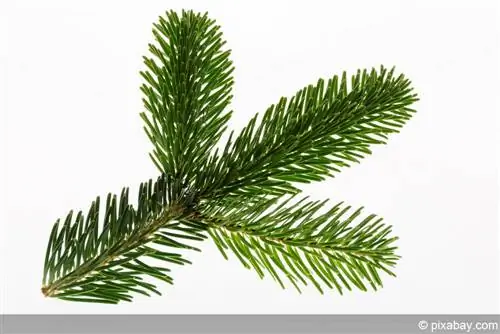
When creating a new garden, the boundaries of the property play an important role. Conifers that are planted next to each other are particularly suitable for this purpose. In addition, coniferous trees - for example when planted as hedges - also serve as effective privacy screens. Since they are evergreen, they provide protection in both summer and winter.
Fast-growing varieties, such as Thuja, have proven particularly useful for such purposes. These cypress plants, which are available in different shades from golden yellow to emerald green, can be used particularly well as hedge plants because they are very easy to cut. The hedges can be given a very individual touch through special cutting measures.
Note:
Spruces and firs are also fast-growing conifers, but their height is rather unsuitable for this purpose in a private garden. However, if they are trimmed, the appearance of the trees suffers.
Fast-growing deciduous trees
Fast-growing deciduous trees include the following varieties:
Birch
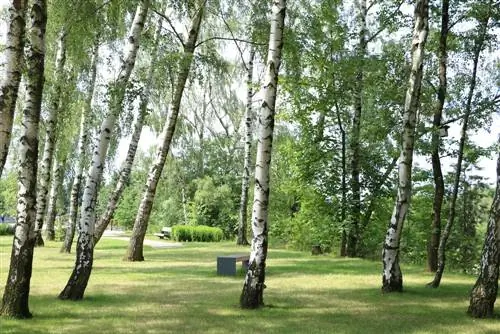
Birches include more than a hundred species, some of which are particularly suitable for use in private gardens; For example, the paper birch has a very decorative trunk and is overall very undemanding. However, since the plant is a shallow-rooted plant, it should not be cultivated near beds.
rowan tree
The mountain ash also grows very quickly and can reach heights of up to 12m. Particularly in autumn, hobby gardeners benefit from the extraordinarily decorative foliage, which shines in rich yellow and orange tones. During the cold season, the small reddish fruits are an important source of food for birds. Some species, for example the “edible mountain ash”, can also be used to make delicious jams.
Willow
The decorative and fast-growing deciduous trees also include the willow, which in the kitten willow variety adorns the festive Easter table, especially in spring. In addition, the plant represents a valuable pasture for bees and is easy to maintain even for beginners.
Bamboo
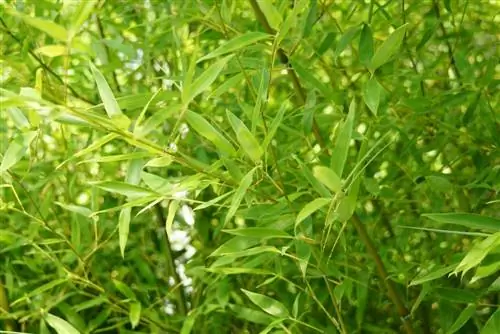
One of the fastest growing trees, however, is bamboo, which is botanically considered a grass. However, the plant can grow like a tree and, in addition to its interesting shape and color, is also characterized by its enormous vigor. This plant is therefore best suited for impatient hobby gardeners.
Conclusion
No matter whether you choose a fast-growing tree, a large or small variety or are inspired by the decorative aspect - once you make the right choice, if you take good care of it, you will enjoy your tree for many years!


